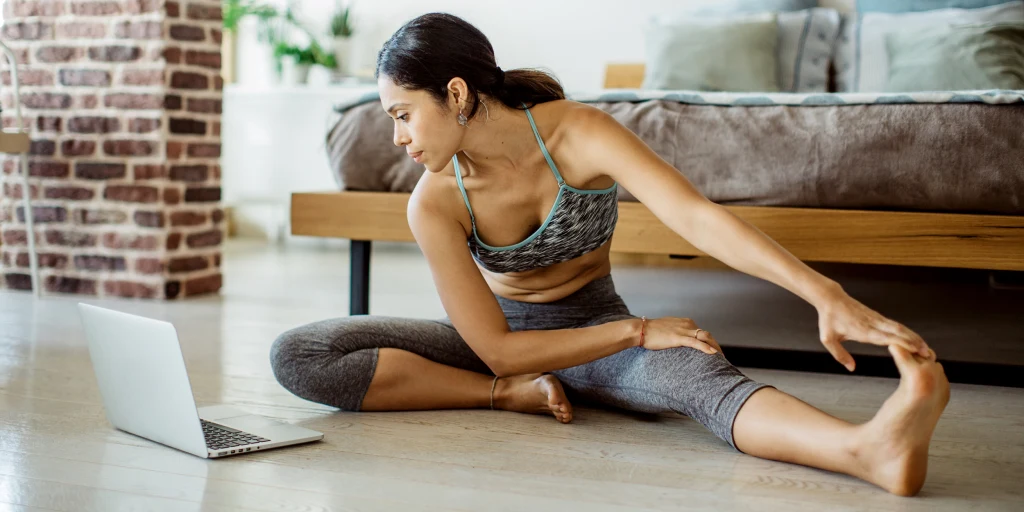If you’re dealing with pain or an injury, your doctor may have recommended physical therapy. Physical therapy can help reduce pain, improve movement, and restore function. It can also help prevent injuries from happening in the future. However, not everyone has access to a physical therapist. That’s where these 10 exercises come in! These exercises are designed to help you improve your range of motion, strength, and stability. They can be done at home, without any special equipment.
Contents
Top 10 Physical Therapy Exercises To Do At Home
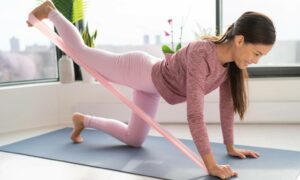 Physical therapy is always recommended when recovering from an injury or managing a chronic illness. However, physical therapy exercises can also be difficult to incorporate into your daily routine due to cost and the need to make regular visits to the therapist.
Physical therapy is always recommended when recovering from an injury or managing a chronic illness. However, physical therapy exercises can also be difficult to incorporate into your daily routine due to cost and the need to make regular visits to the therapist.
Luckily, there are several physical therapy exercises that you can do at home with just minimal equipment! Here is our list of 10 physical therapy exercises that you can do at home:
Ankle pumps
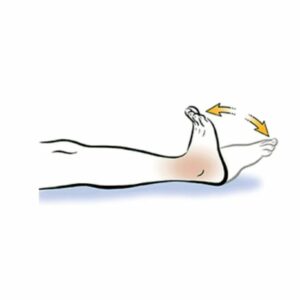 This exercise is great for strengthening your ankles and improving your range of motion. While lying down, lift your feet up and down like you’re pushing on a pedal or pump. Repeat this 10 to 20 times, making sure to keep the rest of your body relaxed while focusing on the motion of your ankles. This type of exercise is also great for treating edema.
This exercise is great for strengthening your ankles and improving your range of motion. While lying down, lift your feet up and down like you’re pushing on a pedal or pump. Repeat this 10 to 20 times, making sure to keep the rest of your body relaxed while focusing on the motion of your ankles. This type of exercise is also great for treating edema.
Heel slides
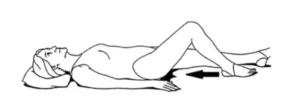 This exercise is useful for strengthening your quads and hamstrings. While lying down, slide one heel up towards your glutes, then back to the starting position. Then repeat this with the other leg, doing 8 to 10 repetitions per side. Make sure you keep your core engaged and your back pressed firmly into the ground. Also, heel slides can be done with assistance from a band, belt, or towel.
This exercise is useful for strengthening your quads and hamstrings. While lying down, slide one heel up towards your glutes, then back to the starting position. Then repeat this with the other leg, doing 8 to 10 repetitions per side. Make sure you keep your core engaged and your back pressed firmly into the ground. Also, heel slides can be done with assistance from a band, belt, or towel.
Wall squats
 This exercise helps to build strength in your quads and glutes. Stand against a wall with your feet shoulder-width apart, then slowly lower yourself down until your thighs are parallel to the ground. Hold this position for 10 seconds, then lift yourself back up. Do 8 to 10 repetitions of this exercise, making sure to keep your core engaged throughout the movement. The major benefits of doing this physical therapy exercise are increased muscle strength and improved balance.
This exercise helps to build strength in your quads and glutes. Stand against a wall with your feet shoulder-width apart, then slowly lower yourself down until your thighs are parallel to the ground. Hold this position for 10 seconds, then lift yourself back up. Do 8 to 10 repetitions of this exercise, making sure to keep your core engaged throughout the movement. The major benefits of doing this physical therapy exercise are increased muscle strength and improved balance.
Cat and cow pose
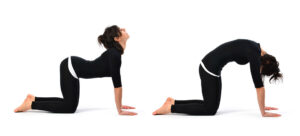 It’s an easy way to start a physical therapy session—the cat and cow pose. This exercise helps improve flexibility in your spine, as well as your neck and shoulders. To do it, come onto all fours with knees hip-width apart, wrists under the shoulders, and eyes on the floor. On an inhale, round through the back, tucking your chin to your chest and arching through your back. On the exhale, roll up the spine, lifting your head and tailbone to the sky. Keep repeating for five breaths or more.
It’s an easy way to start a physical therapy session—the cat and cow pose. This exercise helps improve flexibility in your spine, as well as your neck and shoulders. To do it, come onto all fours with knees hip-width apart, wrists under the shoulders, and eyes on the floor. On an inhale, round through the back, tucking your chin to your chest and arching through your back. On the exhale, roll up the spine, lifting your head and tailbone to the sky. Keep repeating for five breaths or more.
Cobra stretch
 This is a yoga-inspired stretch that helps to strengthen and lengthen the spine. To do this exercise, lie on your stomach and place your hands flat on either side of your chest. Lift your head, shoulders, and torso off the ground as far as you can while keeping your pelvis firmly pressed into the ground. Hold this position for 10 seconds before relaxing back down. You can repeat this exercise 10 times or as many times as you feel comfortable.
This is a yoga-inspired stretch that helps to strengthen and lengthen the spine. To do this exercise, lie on your stomach and place your hands flat on either side of your chest. Lift your head, shoulders, and torso off the ground as far as you can while keeping your pelvis firmly pressed into the ground. Hold this position for 10 seconds before relaxing back down. You can repeat this exercise 10 times or as many times as you feel comfortable.
Leg stretches
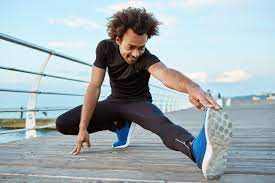 Leg stretches are often prescribed by physical therapists to help improve the flexibility and strength of your legs. To do this stretch, lie on your back with both legs flat on the ground. Slowly lift one leg up towards your chest and hold it for 10 seconds before lowering it back down. You can repeat this exercise with your other leg as well, or alternate between them for 10 reps.
Leg stretches are often prescribed by physical therapists to help improve the flexibility and strength of your legs. To do this stretch, lie on your back with both legs flat on the ground. Slowly lift one leg up towards your chest and hold it for 10 seconds before lowering it back down. You can repeat this exercise with your other leg as well, or alternate between them for 10 reps.
Wall push-ups
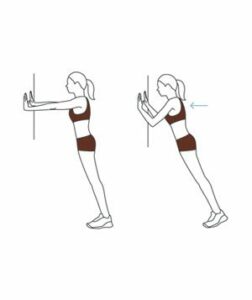 Wall push-ups are a great way to strengthen your upper body without putting too much strain on your joints. To do this exercise, stand facing a wall with your feet shoulder-width apart and your hands flat against the wall at chest level. Keep your back straight and slowly bend your elbows while pushing away from the wall. Hold this position for 10 seconds before releasing and repeating it 10 times.
Wall push-ups are a great way to strengthen your upper body without putting too much strain on your joints. To do this exercise, stand facing a wall with your feet shoulder-width apart and your hands flat against the wall at chest level. Keep your back straight and slowly bend your elbows while pushing away from the wall. Hold this position for 10 seconds before releasing and repeating it 10 times.
Core exercises
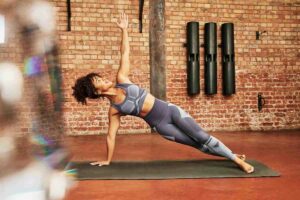 Core exercises are essential for building strength in your abdominal muscles and back. To do a core exercise, start by lying on your back with your legs bent at the knees and feet flat on the ground. Place your hands behind your head and slowly raise your upper body off the ground, bringing your shoulder blades up towards your knees. Hold this position for 10 seconds before returning to the starting point and repeating it 10 times.
Core exercises are essential for building strength in your abdominal muscles and back. To do a core exercise, start by lying on your back with your legs bent at the knees and feet flat on the ground. Place your hands behind your head and slowly raise your upper body off the ground, bringing your shoulder blades up towards your knees. Hold this position for 10 seconds before returning to the starting point and repeating it 10 times.
Toe-touches
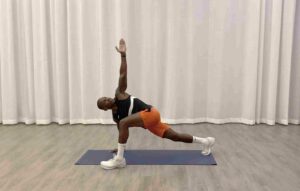 It is important to keep your legs and feet flexible and strong. To do toe-touches, sit with one leg extended out in front of you and the other bent in towards your chest. Reach forward with both hands and try to touch your toes on the extended foot. Hold this position for 10 seconds before releasing and repeating it with your opposite leg. You can repeat this exercise 10 times for each leg.
It is important to keep your legs and feet flexible and strong. To do toe-touches, sit with one leg extended out in front of you and the other bent in towards your chest. Reach forward with both hands and try to touch your toes on the extended foot. Hold this position for 10 seconds before releasing and repeating it with your opposite leg. You can repeat this exercise 10 times for each leg.
Arm circles
 Arm circles are a great way to improve your range of motion and help with shoulder pain. To do this exercise, stand with your feet shoulder-width apart and raise both arms out to the sides at chest level. Slowly make small circles with your arms in one direction for 10 seconds and then reverse the direction for another 10 seconds. You can do this exercise 10 times or as often as you feel comfortable.
Arm circles are a great way to improve your range of motion and help with shoulder pain. To do this exercise, stand with your feet shoulder-width apart and raise both arms out to the sides at chest level. Slowly make small circles with your arms in one direction for 10 seconds and then reverse the direction for another 10 seconds. You can do this exercise 10 times or as often as you feel comfortable.
These are just a few of the physical therapy exercises you can do at home to help improve your overall strength, flexibility, and range of motion. Be sure to consult with your physical therapist if you have any questions or concerns about which exercises are right for you. With the proper guidance, physical therapy exercises can be an effective way to manage your pain and improve your quality of life.
Tips To Get Started
When you’re just starting out with physical therapy exercises, it’s important to take safety precautions and ensure that you have the right equipment. Here are a few tips to help you get started:
- Talk to your physical therapist about the exercises you should do and how often. Make sure you understand how to do the exercises correctly so that you won’t injure yourself.
- Invest in a good quality exercise mat and appropriate clothing, such as workout trousers and non-slip shoes or trainers.
- Start slowly and build up the intensity of your physical therapy exercises as you get used to them.
- Take regular breaks if you find that your muscles are getting tired or weak during an exercise session, and always listen to your body – stop immediately if you feel any pain or discomfort.
- Keep a diary of your progress and note any changes in how you feel after each session.
By following these tips, you’ll be able to get the most out of your physical therapy exercises and achieve the best results. More often, you should always remember that your safety is paramount, so don’t be afraid to take it slow and ask for help if necessary.
With the proper care and guidance, you can be sure to enjoy the many benefits of physical therapy exercises. So start today!
Conclusion
In conclusion, physical therapy exercises can be a great way to improve your health, flexibility, and overall quality of life. With the right guidance and proper form, you can do these exercises at home to reach your goals. Remember to take it easy when starting out and progress slowly as needed. If you have any doubts or questions about which physical therapy exercises are right for you, be sure to consult a physical therapist or medical professional.
With the right approach, you can find success and be on your way to living a healthier and more active life. Happy exercising!
Physical Therapy has always been proven to help patients recover from pain. Hence, if you’re experiencing Back pain, Shoulder pain, Knee pain, Neck pain, Elbow pain, Hip pain, or Arthritis pain, a physical therapist at MantraCare can help: Book a physiotherapy session.
